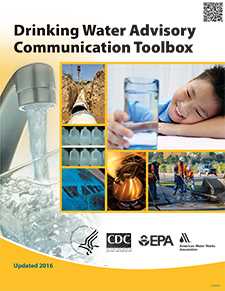Drinking Water Advisory Communication Toolbox

See below for the new edition of the Drinking Water Advisory Communication Toolbox (DWACT). The DWACT Tools and Templates—which include checklists, fact sheets, and press releases—are also available as customizable, printable Word documents.
Water systems and state or local agencies issue drinking water advisories when they believe water quality is or may be compromised. Advisories tell individuals, schools, hospitals, businesses, and others about the situation and how to take immediate action—to boil tap water before drinking, for example, or to avoid drinking or even using tap water.
What's in the Toolbox?
The Drinking Water Advisory Communication Toolbox provides information for water utilities on how to plan for, develop, implement, and evaluate communication activities with the public and stakeholders during drinking water notifications and advisories.
This toolbox includes instructions on how to prepare for communication activities before an incident, how to communicate during an incident, templates and tools to use, and recommendations for follow-up actions and assessments after an incident. The purpose of the toolbox is to enable water systems to communicate effectively with partners, stakeholders, and the public in the event of a drinking water advisory in order to protect public health.
Updated Edition
While the original purpose of the toolbox was to focus on communications related to drinking water advisories resulting from microbiological contamination, recent events—including chemical spills and increases in the incidence of harmful algal blooms (HABs)— demonstrated the need to cover other timely issues related to drinking water advisories.
To address these needs, the 2016 edition contains information regarding chemical contamination, toxin contamination, high rise buildings, and extreme weather events, as well as new fact sheets that provide specific guidance for various types of facilities (for example, childcare facilities and healthcare facilities). Additional flushing recommendations have also been included and will continue to be updated as more robust guidelines around flushing are developed in the future.
How to Use the Toolbox
In addition to having all of the toolbox content available on this website, it is easy to download as a PDF document [PDF - 208 pages].
On this website, the toolbox Tools and Templates—which include items like checklists, facts sheets, and press releases—are also available as customizable Microsoft Word documents. Each tool and template can be downloaded, saved to your computer, and printed.
- Page last reviewed: March 30, 2017
- Page last updated: March 30, 2017
- Content source:


 ShareCompartir
ShareCompartir